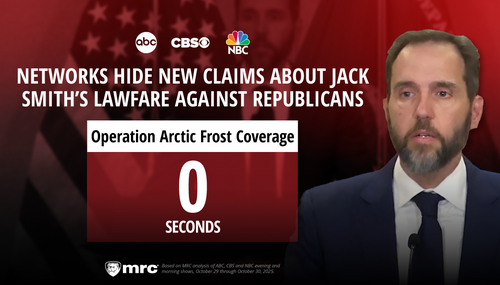Tuesday evening, Associated Press economics writers Christopher Rugaber and Josh Boak attempted to "fact check" statements made by candidates at the just-completed Republican presidential debate.
Claiming that "The fourth Republican presidential debate was thick on economic policy — and with that came a variety of flubs and funny numbers," the two writers botched at least half of the six points they tried to make. Their most obvious economic error concerned the impact of minimum-wage increases (I will cover two others in a future post):
CARSON: “Every time we raise the minimum wage, the number of jobless people increases.”
THE FACTS: Actually, that usually doesn’t happen. When the minimum wage was increased in 1996 and 1997, the unemployment rate fell afterward. In June 2007, when the first of three annual minimum wage increases was implemented, the unemployment rate was unchanged until the Great Recession began six months later.
Dr. Carson was likely focusing on the impact of minimum-wage increases on those who have or want jobs with pay rates in the ranges affected by such legislation, not on total employment. But Carson is right, and the AP pair is wrong, even when considering total employment.
When you're making a flawed point, as Rugaber and Boak were, it's a good idea to start with a flawed premise, which is what the pair did. They did so by treating the unemployment rate as a proxy for total employment instead of looking at the total number of people who were or could have been employed.
The problem with using the unemployment rate exclusively is that the process of determining it classifies millions of Americans who are looking for work as not in the labor force at all, merely because they're not looking for work actively enough to meet the arbitrary and possibly fluid standards of the Department of Labor based on answers obtained by the people who perform the Census Bureau's Current Population Survey. Such people are not considered unemployed.
Even a writer at the far-left American Prospect has recognized that using the unemployment rate as the yardstick in instances such as these is seriously flawed:
Missing Workers: What the Unemployment Rate Isn't Saying About the Recovery
... the unemployment rate is outperforming almost every other indicator of how close the economy is to full recovery. This raises the question of just how much weight we should put on this measure alone to make crucial policy decisions—like when the Fed should raise short-term interest rates. Increasingly the answer to this—recognized by almost all serious analysts—is less and less.
... The unemployment rate is based on a monthly survey of American households. It is calculated by dividing the number of workers classified as “unemployed” by those adults considered part of the “labor force”. A key twist is that “unemployed” does not simply mean “jobless” and the adult “labor force” is not the same thing as the adult population.
To be considered part of the labor force, one must either have a job or be actively searching for one. And the criterion for this active job-search is pretty stringent: you must have engaged in job-search activity in the same month that the labor force survey is taken. If somebody is jobless but has not actively searched for work in the last month, they are not classified as unemployed—in fact they’re not even considered part of the labor force.
The Prospect writer's understanding of the process appears to be dated when compared to my writeup about the process in a column posted at another site last year, based on a discussion with an actual surveyor:
... it appears that taking what many people would see as an acceptable level of unsuccessful action to find work is no longer enough to place one into the ranks of the unemployed. The surveyed person apparently must have taken multiple specific steps during a given week to try to get a job. Surveyors believe that the bar to be considered actively looking for work has been artificially raised, and that many people who are somewhat diligently but not constantly seeking employment are not being classified as unemployed, and are therefore not even considered members of the civilian workforce.
Note that the Prospect's writer referred to active searches during the "last month." Though that is consistent with government guidance found here, the person with whom I spoke last year, i.e., one of the people who asks real people the actual questions, repeatedly stated that his survey's questions hone in on the previous week.
It should be clear that quite a few more American adults will be classified as not actively seeking work — and thus excluded from the labor force, lowering the official unemployment rate — if the benchmark period is a week instead of a month. It should also be clear that if the government has sometime during the past several years changed the benchmark from a month (actually, "4 weeks"), which is what the government publicly says it is, to one week, which is what my contact person says it now really is (and has been for a least a couple of years), that the current officially unemployment rate is lower than it would be if the one month/4 week benchmark was in place. Clearly, as a proxy for total employment, the unemployment rate is unhelpful at best, and misleading at worst.
If Rugaber and Boak had instead broadened their focus to the entire Household Survey and reviewed the available information on the subject, they would have learned that minimum-wage increases have caused an increase in the number of Americans not employed (as opposed to being considered "unemployed" in the unemployment rate calculation). In January, Tim Worstall at Forbes cited a December 2014 National Bureau of Economic Research study which reported the following:
Over the late 2000s, the average effective minimum wage rose by 30 percent across the United States. We estimate that these minimum wage increases reduced the national employment-to-population ratio by 0.7 percentage point.
The impact of a 0.7 point reduction in the employment-to-population ratio is that roughly 1.8 million Americans are not employed who otherwise would have been in the absence of the minimum-wage legislation cited, with lower-income and lower middle-income households obviously the most severely affected. That negative impact dwarfs any supposedly positive impact on the arbitrarily determined and highly exclusionary unemployment rate cited by the AP pair. Thus, their "fact check" answer to Dr. Carson's statement is at best non-responsive, and at worst deliberately deceptive.
Additionally, if they had focused on the impact of minimum-wage increases on people actually or potentially affected by them, Rugaber and Boak should have been able to find the following at that same Forbes link:
... we compare(d) workers in states that were bound by recent increases in the federal minimum wage to workers in states that were not. ... Over three subsequent years, we find that binding minimum wage increases had significant, negative effects on the employment and income growth of targeted workers.
More broadly, the available literature on the impact of minimum-wage legislation shows that Dr. Carson is at least 85 percent correct, and that Rugaber and Boak are between 85 percent and 100 percent wrong. Specifically, as Michael Saltsman noted in April 2013, also at Forbes:
In a comprehensive, 182-page summary of the research on this subject from the last two decades, economists David Neumark (UC-Irvine) and William Wascher (Federal Reserve Board) determined that 85 percent of the best research points to a loss of jobs following a minimum wage increase.
As in any academic discipline, there are outliers. But even the outliers are problematic: For instance, the famous (or rather, infamous) New Jersey study that associated a higher minimum with increased employment was later refuted in the same academic journal that originally published it. More recently, the paper that the President relied on to make his case for a higher minimum was debunked in a study published by the National Bureau of Economic Research.
If, as I suspect, there is no undebunked research pointing to job gains following a minimum wage increase, Rugaber and Boak would indeed be 100 percent wrong.
What the AP pair presented in this instance was not a "fact check." It was "fiction promotion."
Cross-posted at BizzyBlog.com.




